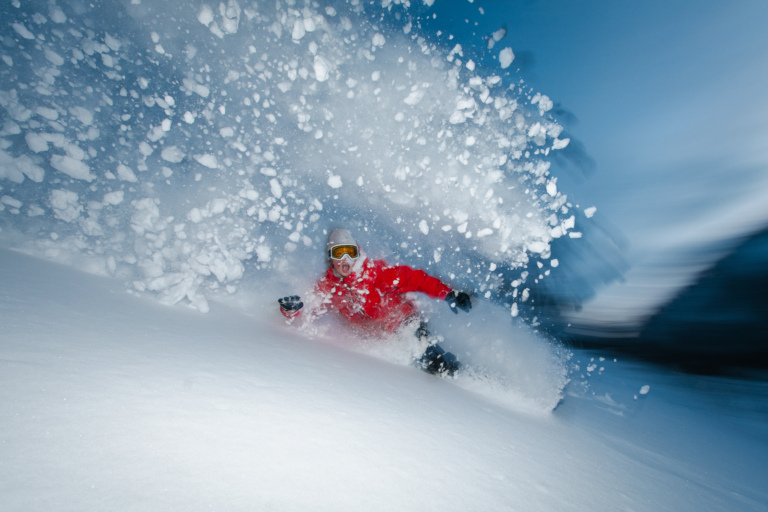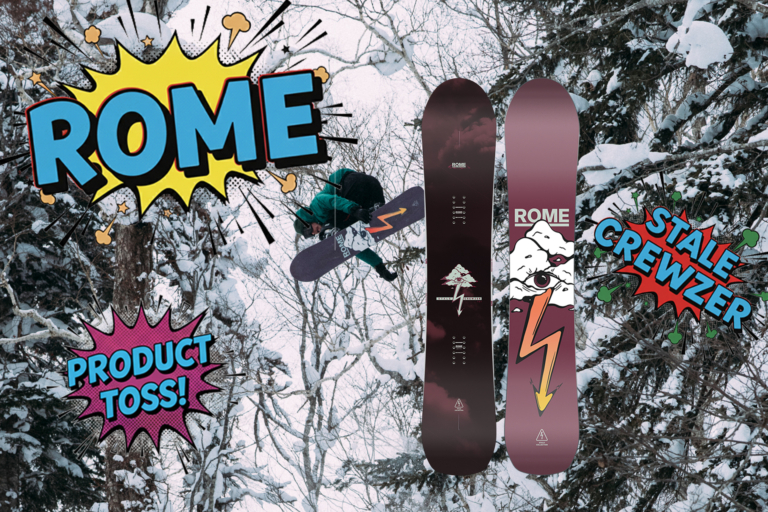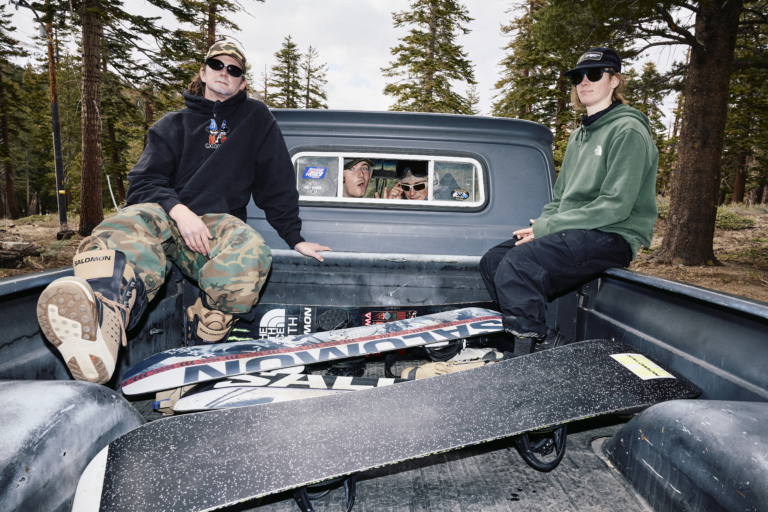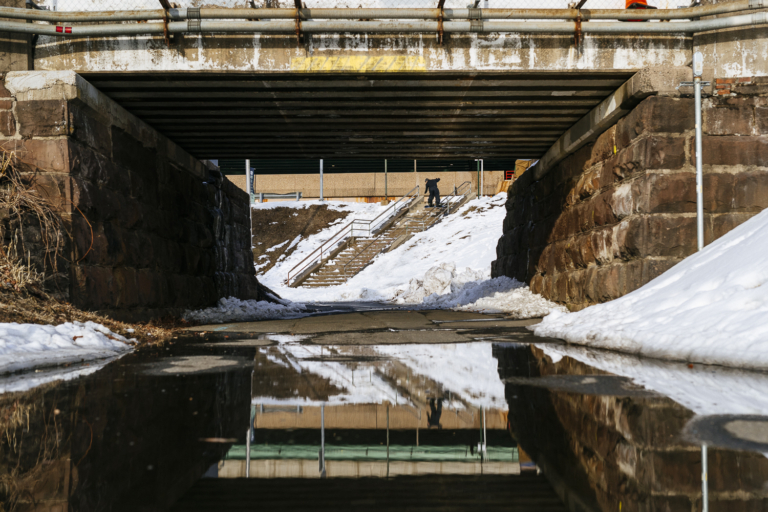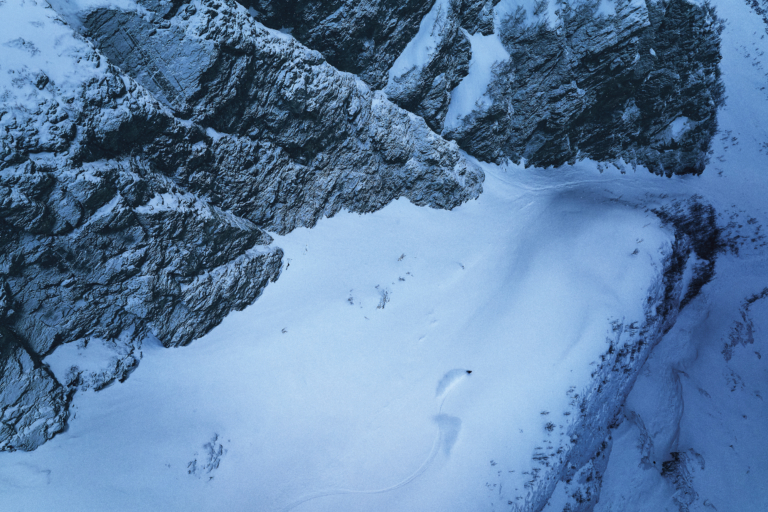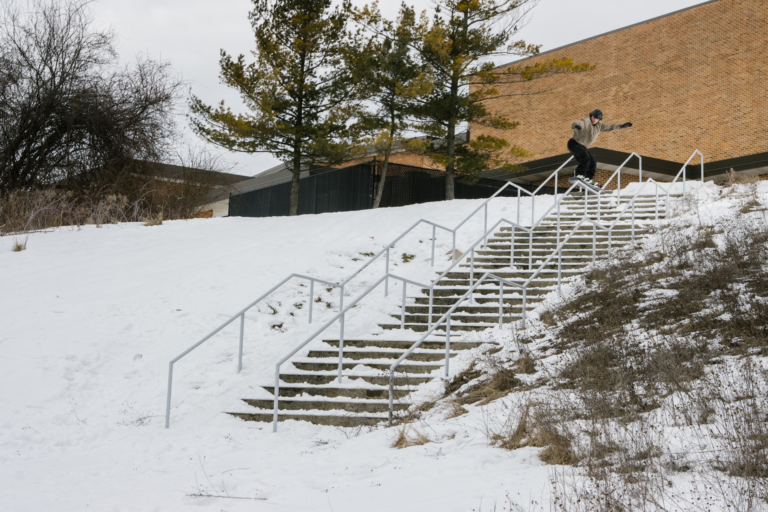[vc_row][vc_column][vc_column_text]Over the course of the past year, the recently named Alterra Mountain Company has asserted its emergence as the newest big player in the resort management game. Since April 2017, the company—formed by Henry Crown & Co. along with KSL Capital Partners—has acquired Intrawest (which held properties in Colorado, British Columbia, Quebec, West Virginia, Vermont and Ontario), Deer Valley Resort and the four destinations under the Mammoth Resorts umbrella. Now, after months of steady anticipation, the company is launching its Ikon Pass.
The Ikon Pass is a collaboration between Alterra Mountain Company and nine other leading companies in the ski industry—Aspen Skiing Company, Alta Ski Area, Boyne Resorts, Jackson Hole Mountain Resort, POWDR, Snowbird, SkiBig3, Revelstoke Mountain Resort and Sugarbush Resort. All told, the Ikon Pass, which includes two pass offerings–the Ikon Pass and Ikon Base Pass— include 26 destinations spread across nine states and four Canadian provinces, 63,709 skiable acres and a combined 86,826-foot vertical drop.
To better acquaint you with what makes each of these mountain destinations unique—from the culture, to the terrain and more—we’ve introduced each destination in the article featured below.. Read up, then head to ikonpass.com for more pricing details and purchase options.[/vc_column_text][/vc_column][/vc_row][vc_row][vc_column][vc_single_image image=”75313″ img_size=”full” alignment=”center”][vc_custom_heading text=”Steamboat Ski Resort” use_theme_fonts=”yes”][vc_column_text]As far as Rocky Mountain ski areas go, Steamboat offers, arguably, the most authentic western vibe in the entire region. It’s a ski town, first and foremost, but with an undeniable cowboy spirit. In fact, a 1947 Associated Press article included a photo caption that stated, “The population of Steamboat Springs, Colorado is 1,700. The number of persons who skis is reported to be 1,685. The others are children under one year of age.” If that isn’t proof of Steamboat’s ski-crazed attitude, what is?
The resort is comprised of six peaks—Mount Werner, Sunshine Peak, Storm Peak, Thunderhead Peak, Christie Peak and Pioneer Ridge—that total up to 2,065 acres of rideable terrain. And, on average, 336 inches of Champagne Powder—a term trademarked by the resort, referring to the lighter, drier than normal snow that falls upon Steamboat’s northerly location—blanket those 2,065 acres each winter. You can bet the house that you’ll have dreamy snow conditions no matter the date of your visit.
Off the hill, the town of Steamboat Springs offers incredible dining and nightlife—Salt and Lime, The Old Town Pub and Schmiggity’s Live Music Dance Bar are a few Snowboard Mag’s favorites. And for those looking to rest up those tired ski legs, the Strawberry Park Hot Springs are guaranteed to provide the remedy.[/vc_column_text][/vc_column][/vc_row][vc_row][vc_column][vc_single_image image=”75314″ img_size=”full” alignment=”center”][vc_custom_heading text=”Winter Park Resort” use_theme_fonts=”yes”][vc_column_text]Located a right over historical Berthoud Pass, Winter Park Resort provides incredibly diverse terrain, easily accessible to the Denver metropolitan area. The resort, which has been spinning lifts since 1940, splits up its mountains into seven territories.
There’s Winter Park Territory, which includes skiing for every ability level, from groomers to jumps to trees and beyond. Vasquez Ridge is situated to the lower skier’s left of the resort, and its remote location on the mountain allows riders to farm untouched pockets of snow days after a storm. Parsenn Bowl features North America’s highest six-passenger lift, which rises to 12,060 feet, and offers high-alpine bowl riding that funnels shredders down into mellow-pitched glades. Eagle Wind is all about the trees, offering steep glades and a inbounds experience with a backcountry feel. For those who enjoy challenging themselves in big-mountain competition-esque terrain, the Cirque is the go-to in Winter Park (signing up for the Cirque Sled via a $20 fee will save you quite the hike out to this zone.) Winter Park’s Terrain Park Territory also gives park-rats an 18-foot superpipe, over 80 features from beginner to advanced level and a separate, experts-only terrain park, dubbed Dark Territory. Lastly, but certainly not least, is Mary Jane Territory. You’ll need to make sure you’ve done your squats in preparation for this zone, as Mary Jane offers up steep mogul lines, tight trees, narrow chutes and the most consistent snow at the entire ski area, all with a decidedly laid-back vibe that keeps locals coming back year after year.
When it’s time for après, Winter Park has an abundance of bars and restaurants at its two base villages to wet your whistle and appetite. Lime, Doc’s Roadhouse and the Derailer Bar are all favorites at the Winter Park base. Over at Mary Jane, hit the Club Car for upscale eats and beers or head to the basement and grab a slice and draft beer at Pepperoni’s, one of the local secrets (shhhh).[/vc_column_text][/vc_column][/vc_row][vc_row][vc_column][vc_single_image image=”75315″ img_size=”full” alignment=”center”][vc_custom_heading text=”Copper Mountain Resort” use_theme_fonts=”yes”][vc_column_text]Those looking to escape the hustle and bustle found at other big resorts in Summit County, Colorado would do well by Copper Mountain. Located on the East side of Vail Pass, Copper gives riders 2,490 skiable acres spread over 140 trails and a 2,601-foot vertical drop.
Copper’s below-treeline terrain has something for everyone. Looking for high-speed, high-octane groomers that allow you to get so deep in the trenches you’ll think you’re in World War II? Take the Super Bee lift and bomb down West Encore or Collage. Enjoying dipping and dodging through the trees? Head over to the Enchanted Forest, 17 Glade or Cache Glades. And for those seeking the thrill, challenge and serenity that comes with riding above treeline, Spaulding Bowl, Copper Bowl and Tucker Mountain should be on the hit list. If you want to save yourself a hike up the West Ridge or Copper Bowl, catch a free ride on the Tucker Mountain Snowcat at the base of the Mountain Chief Chairlift anywhere from 10 a.m. to 3 p.m.—and if you’re wearing an avalanche beacon, you get an expedited wait time. Three cheers for safety!
As far as non-snow activities go, the main attraction is most definitely Woodward at Copper Barn. The colossal red building can be found along the Copper Mountain access road and houses a multitude of tools to take your freestyle snowboarding to the next level. The Barn is home to five Olympic trampolines, an expansive “super trampoline” and a fleet of “Parkboards”—mini snowboards equipped with wheels—that can be utilized on Woodward’s three jumps. Each jump caters to a different ability level and launches participants into a no-consequence foam pit.
Copper is no stranger to après, either. A few Snowboard Mag favorites located in the Copper base area include slices at Gustino’s Pizza, sushi at the Storm King Lounge, tacos and margaritas at Casa Sanchez and pub food and pints, along with the occasional live musical performance, at Incline Bar & Grill. [/vc_column_text][/vc_column][/vc_row][vc_row][vc_column][vc_btn title=”Get Your IKON PASS Today” style=”flat” shape=”square” color=”primary” size=”lg” align=”center” link=”url:https%3A%2F%2Fad.doubleclick.net%2Fddm%2Ftrackclk%2FN8848.416831SNOWBOARDINGMAGAZINE%2FB20782271.215711709%3Bdc_trk_aid%3D414768790%3Bdc_trk_cid%3D98594628%3Bdc_lat%3D%3Bdc_rdid%3D%3Btag_for_child_directed_treatment%3D||target:%20_blank|”][/vc_column][/vc_row][vc_row][vc_column][vc_custom_heading text=”Eldora Mountain Resort” use_theme_fonts=”yes”][vc_column_text]Eldora is Colorado’s Front Range gem, hidden in plain sight. Located 21 miles from Boulder (and only 47 miles from Denver), just south of Nederland, Eldora offers up 680 acres and 65 trails of delicious down-home-cookin’.
With the Indian Peaks Wilderness looming behind them, Eldora snowboarders have access to a huge variety of terrain packed into a smaller package than many other big Colorado resorts. Don’t let its size fool you, however, as you’ll never stand in a line at Eldora and the ski area’s new Alpenglow high-speed six pack as made high-speed hot laps even easier. The steep groomers and bump runs of the frontside—accessed via the Alpenglow and Indian Peaks lifts—are enough to make even strongest tree trunk quads scream for mercy, and adventurous skiers riders urged to head far skier’s left and shred the Corona Lift. There, they’ll find challenging tree runs that’ll closely resemble many Colorado backcountry zones.
Eldora also debuted its own uphill policy—an increasingly popular attraction among ski areas—for the 2016-17 ski season. If you want to earn your turns, as many of the famously-fit Boulder County residents tend to do, an AT day ticket will only run $25.
As for dining and après, Eldora has made significant updates to its lodge amenities in recent years. The Timber Tap Room (located upstairs in the Timbers Lodge) is the spot for a relaxed après atmosphere, while Rustic Taco will satiate your taste for Mexican eats and margaritas. [/vc_column_text][/vc_column][/vc_row][vc_row][vc_column][vc_single_image image=”75316″ img_size=”full” alignment=”center”][vc_custom_heading text=”Squaw Valley / Alpine Meadows” use_theme_fonts=”yes”][vc_column_text]Arguably the most renowned ski resort in the Lake Tahoe-area, Squaw Valley Alpine Meadows puts 6,000-plus acres of badass terrain at the fingertips of its guests. The resort’s smorgasbord of tasty lines and big-mountain terrain has helped legends like Jeremy Jones, Shane McConkey more make names for themselves.
And Squaw Valley’s terrain is even more famous than the riders, themselves. You’ve got zones like The Fingers—collection of tasty cliffs, chutes and general gnar—that sits adjacent to the acclaimed KT-22 lift, an ideal spot to put on a show for spectators on the chair. Higher up the mountain sits The Palisades. A common place for “pro callouts,” this area is straight-line central. The majority of descents don’t allow for easy turning and culminate in mandatory airs to the apron below.
Alpine Meadows, while quieter than its south side sibling, provides plenty of wide-open, pristine bowls and faces with a multitude of natural features that keep the skiing primo, all day and all season long. Plus, it’s home to some of the best backcountry access gates in the Tahoe region. Link Wolverine Bowl to Waterfall when the snow is deep and seek out Estelle Bowl for fresh snow long after the storm. Corn connoisseurs should shred Beaver Bowl in the spring.
After putting your legs through the wringer, head to Le Chamois for après on the Squaw side. This spot has been a popular Squaw Valley watering hole since 1969. The bar’s outdoor patio is the perfect spot to down cold brews, snack on some ‘za and point out the lines you bagged that day. On the Alpine side, the Last Chair Bar is the undisputed champion of après, and offers traditional pub fare as well as a seared tuna tagarashi for the adventurous types.
[/vc_column_text][/vc_column][/vc_row][vc_row][vc_column][vc_single_image image=”75308″ img_size=”full” alignment=”center”][vc_custom_heading text=”Mammoth Mountain” use_theme_fonts=”yes”][vc_column_text]The sky-tickling peaks of the Eastern Sierra Nevada mountain range rises dramatically from the San Joaquin Valley, and its crown jewel ski area is none other than Mammoth Mountain. And it’s no secret why; Mammoth averages 400 inches of snowfall each winter, boasts 3,500 acres of skiable terrain and a 3,100-foot vertical drop, with 13 world-class—and we do mean world-class—terrain parks, to boot.
With its abundance of above-treeline terrain, Mammoth Mountain is littered with natural features small, medium and big—it’s no wonder riders like Danny Davis and John Jackson call this mountain home. All of Mammoth’s mid- and lower-mountain lifts provide access to leg-burning groomers, as well as the resort’s Unbound Terrain Parks. On a powder day, however, it’s best to hot lap Chair 22, which accesses steep shots like the Avalanche Chutes, Shaft and Grizzly for excessive face shots. Chair 23 provides lappable access to “scare yourself” terrain like the Dropout Chutes, Starr Chute and Kiwi Flatts. Head to the backside and hit The Hemlocks, a tree-skiing zone that features some terrain park-esque features to fuse some freestyle into your glade shredding. In reality, you can’t go wrong on any single part of the mountain, and when it’s not a powder day, the gusts that call Mammoth home create some mouth-watering wind buff all across the ski area.
Off the hill, there’s always something to going on in Mammoth Lakes. The Mammoth Tavern is always bustling, features an incredible view of the Sherwins Range and is a great place to feel like a local. If a pint is what your after, head to Mammoth Brewing Company, and if you’re looking to fist pump deep into the night, the tropical-themed Lakanuki is your ticket to a good time.
[/vc_column_text][/vc_column][/vc_row][vc_row][vc_column][vc_single_image image=”75312″ img_size=”full” alignment=”center”][vc_custom_heading text=”Big Bear Mountain Resort” use_theme_fonts=”yes”][vc_column_text]Big Bear Mountain Resort—comprised of both Snow Summit and Bear Mountain—offers the closest skiing experience to the Los Angeles metro area, high in the San Bernardino Mountains.
Year-in and year-out, Bear Mountain offers some of the finest terrain parks—three halfpipes and two parks, total—in all of North America. Bear provides eager jibbers with over 200 features and jumps, heavily influenced by the surfing and skating culture that permeate Southern California. For those uninterested in the park, Goldmine Canyon, Deer Canyon and Bow Canyon provide high-octane trees, while a T2B run linking Geronimo with Accelerator and Easy Street adds up to 1,665 vertical feet of carving.
Snow Summit, located around the corner from Bear Mountain, boasts an incredibly extensive snowmaking system that ensures the ski area can offer top-notch snow conditions to its contingent of Southern California boarders. It’s of such quality that Snow Summit hosted the inaugural Winter X Games, way back in 1997—you’re welcome for that trivial knowledge. In terms of terrain, Snow Summit possesses 31 runs of varying difficulty, including two terrain parks, spread over 240 acres and a 1,200-foot drop.
After all of that shredding, it’s time for brewskis under the sun and Big Bear has one of the best patio scenes in the après game. Bear Mountain’s Beach Bar, located on the 13,000-square-foot sun deck, is perfect for good times under the So Cal sunshine. As for food, the Bighorn Smokehouse—pulled pork sandwich, anyone?–is the on-mountain spot at Snow Summit to grub, while Laybacks Bar at Bear Mountain is the go-to to grab a bite and a beer while basking in the Southern California sunshine. The town of Big Bear Lake offers a bevy of lodging, dining and nightlife, too.[/vc_column_text][/vc_column][/vc_row][vc_row][vc_column][vc_single_image image=”75307″ img_size=”full” alignment=”center”][vc_custom_heading text=”June Mountain” use_theme_fonts=”yes”][vc_column_text]For you riders out there seeking a ski town that operates at a slower, less hectic pace, yet still boasts daydream worth terrain and snow, June Mountain is the place for you. There’s only one road into the town of June Lakes—located 22 miles north of Mammoth Lakes—in the winter, and that quasi-remoteness means that the ski area rarely gets tracked out… great for the powder hounds among us.
June Mountain’s J1 chair—a classic centerpole double—is the only base area access point on the mountain. If you’re looking to harvest great lower mountain powder turns off of J1, The Face is the run to lap. June’s Rainbow Summit, located to the skier’s left, offers a smorgasbord of upper mountain blue squares for the groomer aficionados. To the skier’s right, the June Mountain Summit challenges skiers with a full face of blacks and double blacks. For those who enjoy lift-accessed backcountry laps, June Mountain has an open boundary policy, and an hour traverse and hike from the June Mountain Summit provides access to zones like The Negatives, which offers incredible big-mountain skiing. As always, be sure you have the proper equipment, a partner and education when venturing beyond the resort boundary.
On those sunny, bluebird days that are so common in the Eastern Sierra, hit the June Mountain Chalet at mid-mountain to enjoy food and drink while gazing out at the high peaks behind the ski area. For in-town après, the June Lake Brewery is your best bet.
[/vc_column_text][/vc_column][/vc_row][vc_row][vc_column][vc_single_image image=”75317″ img_size=”full” alignment=”center”][vc_custom_heading text=”Stratton Mountain” use_theme_fonts=”yes”][vc_column_text]Stratton Mountain is a true southern Vermont skiing gem, a Green Mountain beacon of shred that beckons to eager riders from major cities such as New York, Boston, Hartford, Albany and Manchester.
Stratton provides riders with 670 acres of terrain (160 of which are designated as glade skiing), 97 trails and a 2,003-foot vertical drop. Perhaps its greatest draw, however, is its lift system. Stratton boasts a whopping four six-passenger chairlifts, along with a gondola, three quads, one triple and a double, adding up to a lift capacity of 33,428 riders per hour. Rest assured, hot-lapping is easy breezy at Stratton.
Those that hang their hat on their carving ability will salivate over Stratton’s trail selection. From the resort base, guests can gaze up at a multitude of meticulously manicured groomers—ranging from mellow angled runs like Black Bear to sharp pitches like Upper Standard. However, Stratton isn’t only for hardpack-aficionados. Venture into the aforementioned 670 acres of tree skiing and enjoy exhilarating double black runs like Diamond in the Rough, Squirrel’s Nest, Kidderbrook Ravine and more.
Stratton’s base village has a quintessential Austrian-vibe and dining options ranging from casual to ultra-swanky. For high-end cuisine, make a reservation at the Fire Tower. If you’re looking for something in the burger and beer category, head over to Bar 802.[/vc_column_text][/vc_column][/vc_row][vc_row][vc_column][vc_btn title=”Get Your IKON PASS Today” style=”flat” shape=”square” color=”primary” size=”lg” align=”center” link=”url:https%3A%2F%2Fad.doubleclick.net%2Fddm%2Ftrackclk%2FN8848.416831SNOWBOARDINGMAGAZINE%2FB20782271.215711709%3Bdc_trk_aid%3D414768790%3Bdc_trk_cid%3D98594628%3Bdc_lat%3D%3Bdc_rdid%3D%3Btag_for_child_directed_treatment%3D||target:%20_blank|”][/vc_column][/vc_row][vc_row][vc_column][vc_single_image image=”75318″ img_size=”full” alignment=”center”][vc_custom_heading text=”Snowshoe Mountain” use_theme_fonts=”yes”][vc_column_text]As John Denver once stated, “Almost Heaven, West Virginia,” and for riders in America’s Mid-Atlantic and Southeast regions, Snowshoe Mountain Resort is just that.
Everything about Snowshoe is unique, beginning with the location of its “base” village. When you arrive at Snowshoe’s base village, you’re actually at the top of the resort. Wake up, buckle in, ride down—it’s as simple as that.
In addition, Snowshoe’s high elevation atop West Virginia’s second highest peak (4,848-foot Cheat Mountain) and proximity to Shavers Lake brings about the best quality and most abundant snow in the region. Snowshoe is made up of three distinct areas. Snowshoe Basin is the most expansive and boasts everything from mellow groomers to tree runs and moguls. Silver Creek is home to three terrain parks, as well as a tubing park for those so inclined. The true gem, however, is The Western Territory. Located on the rear side of the mountain from Snowshoe Basin and Silver Creek, this zone offers up the steepest, fastest runs at Snowshoe Resort—a must-ski for any guest at the ski area.
Snowshoe’s charming mountaintop village has everything you need to après, dine and dance. The Old Spruce Tavern is a solid option for beers and pub food and you can’t go wrong grabbing a slice at Cheat Mountain Pizza. If dancing is your forte, there’s no better locale than The Connection Nightclub, where the Beats on the Basin concert series gets the tunes flowing each Friday during ski season.
[/vc_column_text][/vc_column][/vc_row][vc_row][vc_column][vc_single_image image=”75319″ img_size=”full” alignment=”center”][vc_custom_heading text=”Mont-Tremblant” use_theme_fonts=”yes”][vc_column_text]Look around Mont-Tremblant’s base village and you’ll think you arrived in Europe. The Quebec ski area has a decisively French-alpine feel, set amongst the impressive Laurentian Mountains.
And while Tremblant’s base village may be bustling, the shredding has a serene, rural feel to it. Whether you’re cruising the groomers, challenging yourself on the steeps or disappearing into the glades, you’ll often be able to enjoy the shredding in near silence.
The majority of Tremblant’s publicity, however, is the après, dining and nightlife scene. The Le P’tit Caribou bar is the undisputed king of after-ski at Tremblant. For dinner, popular, reservation-required spots in town include Mille Pâtes for Italian, Seb Lartisan Culinaire for Quebecois/French-inspired eats and La Savoie for fondue. For more laid back vibes (and prices) check out Pub St-Georges, Microbrasserie St-Arnould or Microbrasserie La Diable. If you’re looking to keep the party going late-night, the Café d’Epoque offers a different themed party every night of the week.
[/vc_column_text][/vc_column][/vc_row][vc_row][vc_column][vc_single_image image=”75310″ img_size=”full” alignment=”center”][vc_custom_heading text=”Blue Mountain
” use_theme_fonts=”yes”][vc_column_text]A favorite among Toronto skiers, Blue Mountain is Ontario’s largest ski area, offering 43 trails spread over 365 skiable acres.
Thanks to its proximity to Lake Huron, Blue Mountain receives an abundance of snowfall in relation to its 720-foot elevation. Combine that natural fluff with a robust snowmaking system, and you’ve got quality skiing all winter long.
If you’re planning your stay at Blue Mountain, the resort has plenty of on-site accommodations—we suggest the Grand Georgian for its European-style charm. As for après, Rustys at Blue and MJ Byrnes Irish Pub are top-notch choices. For a real party, though, hit up Smash Ping Pong and Nite Club for table-tennis and late night raging.[/vc_column_text][/vc_column][/vc_row][vc_row][vc_column][vc_single_image image=”75311″ img_size=”full” alignment=”center”][vc_custom_heading text=”Jackson Hole Mountain Resort ” use_theme_fonts=”yes”][vc_column_text]The name speaks for itself, but for those who don’t know, Jackson Hole Mountain Resort is one of the premier snowboarding experiences in all of North America, if not the world. What makes JHMR so unique is that it boasts varied terrain and plentiful snow—to the tune of 459 inches per year on average—allowing skiers to take advantage of something reserved for only a few other resort experiences: hair-raising, big-mountain terrain and plenty of technical features located inbounds.
Whether it’s famous lines like Corbet’s Couloir and S&S or popular zones like the Alta chutes, Casper Bowl and the Crags, you’re sure to find something to pucker yourself up at Jackson Hole. Perhaps the most iconic aspect of Jackson Hole, of course, is the big red tram, that provides access to 4,139 vertical feet of leg burning fun.
As far as slopeside accommodations go, the ritzy types would do well by the Teton Mountain Lodge, Hotel Terra or the Four Seasons Resort. For fancy digs in the town of Jackson, Amangani is the ticket. For the lowest rates in Teton Village, check out The Hostel, located at the base of the resort.
In terms of food, you haven’t lived until you’ve had a waffle from Corbet’s Cabin, located at the top of the tram. Hit up Bodega for some of the best slopeside fried chicken sandwiches around or Teton Thai for Asian eats. The Mangy Moose, Spur and Handlebar are all popular après spots, while the Million Dollar Cowboy Bar in downtown Jackson and the Stagecoach Bar in nearby Wilson are the spots to party hard into the night. Local legend Bill Briggs, the first person to descend the Grand Teton on skis, leads the Stagecoach Band every Sunday night. [/vc_column_text][/vc_column][/vc_row][vc_row][vc_column][vc_single_image image=”75320″ img_size=”full” alignment=”center”][vc_custom_heading text=”Big Sky Resort” use_theme_fonts=”yes”][vc_column_text]The Lone Peak Tram, located on its 11,166-foot namesake prominent skyward-thrusted geological masterpiece at Big Sky Resort, offers chairlift-access to some of the most exposed big-mountain terrain in North America. The most famous run access via the tram, the Big Couloir, is a near-vertical drop from the summit that plummets 1,400 vertical feet to the apron below. All this is to say, the skiing at Big Sky is the real deal.
Overall, the southern-Montana resort offers 5,800 skiable acres (that’s third most in the United States), a 4,350-foot vertical drop, 400 inches of average annual snowfall and 300 named trails. They don’t call it Big Sky for no reason. The aforementioned Big Couloir is a must ski, but other highlights include absolutely every chute off the Headwaters Double, The Gullies and all of the groomers accessed via the Challenger Triple.
When all of that Big Sky terrain causes your stomach to have a hunger fit, head to Headwaters Grille at the Madison Base Area for a mellow vibe and some Montana Wagyu burgers, sourced from a ranch just west of Big Sky. And when it’s après time, there’s no better place than Scissorbills Saloon. Ski down from Andesite Mountain straight into the bar and throwback cocktails, wine and beer. Fun fact: Scissorbills is the lone bar that is independently owned in the mountain village.
[/vc_column_text][/vc_column][/vc_row][vc_row][vc_column][vc_custom_heading text=”Killington Resort” use_theme_fonts=”yes”][vc_column_text]Killington is the Beast of the East… ‘nuff said. With 1,509 skiable acres, six mountain peaks and 73 total miles of trails, it’s the biggest ski resort east of the Mississippi. And the terrain found within those 1,509 acres? It’s world-class.
For those chomping at the bit for steep tree powder stashes, Killington Peak’s upper reaches feature double black glades—home to some of The Beast’s most-coveted zones. From the K-1 Lodge, there’s easy access to untouched storm snow in the Big Dipper, Anarchy and Julio glades. In terms of groomers, any local will tell you that Needle’s Eye is the place to be for carving enthusiasts.
If you need to fill your belly, the best lunch spot on the mountain is the Peak Lodge, bar none. Grab the Peak Burger and enjoy the view via floor-to-ceiling glass windows. If you’re looking for a romantic dinner, the Ledgewood Yurt is the place to be—you get their via horse-drawn carriage for goodness sake. As far as après goes, the Roaring Brook Umbrella Bar allows you to down some bevvies while watching skiers shred down the aforementioned Superstar trail.
And the undisputed king of nightlife? The Wobbly Barn. Head there to party all night long with live music, to boot. [/vc_column_text][/vc_column][/vc_row][vc_row][vc_column][vc_custom_heading text=”Sugarbush” use_theme_fonts=”yes”][vc_column_text]Sugarbush, located in Vermont’s Mad River Valley, features over 4,000 skiable acres spread across six peaks (including the iconic steep skiing off of Castlerock), making it one of the largest ski areas in New England.
The ‘Bush, as it’s affectionately referred to, is also home to some of the best terrain parks on the entire East Coast. Whether you’re a jibber, tree skier, cliff hucker, groomer-hound or bump shredder, Sugarbush has the terrain to tickle your fancy.
For lodging, Clay Brook at Lincoln Peak is the definitive spot. It’s slopeside with luxurious suits, prime hot tubs and valet ski service. Its rooms are styled like a classic Vermont barn with a silo. Pitcher Inn is another fancy spot in downtown Warren. Hit Hostel Tevere for the most affordable digs. As for easts, The Common Man offers delectable American cuisine with a fully-stocked bar.
[/vc_column_text][/vc_column][/vc_row][vc_row][vc_column][vc_single_image image=”75322″ img_size=”full” alignment=”center”][vc_custom_heading text=”Revelstoke Mountain Resort” use_theme_fonts=”yes”][vc_column_text]With 5,620 feet of vertical, 3,121 acres of skiable terrain and 400 inches of average annual snowfall, Revelstoke Mountain Resort (RMR), in British Columbia, Canada, is a certified world-class ski area. Unlike most top-name resorts, though, The “Stoke” lacks the sweeping crowds. Given its somewhat remote location—a nearly five-hour drive from Calgary, Alberta or a two-and-a-half-hour commute from Kelowna International Airport—the place attracts only the most diehard skiers. That’s because, while the lift lines certainly aren’t monstrous, the terrain is. And when you consider the riding possibilities outside of the resort boundaries, it’s limitless.
To properly start a day within the resort confines, enjoy warm up laps on The Stoke; underneath this lift you’ll find “side hits” and natural transitions all over the place. Keep your eyes and ears open for news regarding the opening of areas like North Bowl and Separate Reality; these neighboring zones are accessible via a quick hike. The former serves up cliffs galore while the latter boasts tree skiing that’ll make you giddy. Across the way, Gracias Ridge splits the North and Greely bowls and is home to butt-puckering chutes, cliffs and wind lips. And that’s just a small sampling of the burly inbounds territory; a mere seven percent of the terrain is categorized as “beginner.”
Off the hill, you can’t go wrong with après at the Mackenzie Common Tavern—we recommend the Caesar, naturally. In town, you’ll find some of the best ski town sushi you’ve ever tasted at Kawakubo. Following dinner, the best place to boogie down late night is The Village Idiot, no doubt.[/vc_column_text][/vc_column][/vc_row][vc_row][vc_column][vc_custom_heading text=”Aspen Snowmass” use_theme_fonts=”yes”][vc_column_text]Imagine a mountain town with four ski areas—one of which includes a 2,000-vertical-foot bowl of legit, hike-to, exposed big-mountain terrain—and a free bus system connecting them all. Dream up a place where the sun shines 300 days a year (on average), where consistent winter storms refill stashes in 5,000 acres of resort terrain and where lift lines form only a few days per season. Picture riding 3,200 feet down to a historic mining town bustling with over 100 bars, restaurants and music venues, all run on renewable energy. Visualize a ski town that gathers world leaders, scholars, scientists, musicians and artists and offers its residents big-city quality theatre, ballet, museums, music, lectures and more—much of it complimentary.
That fantasy is a reality at Aspen Snowmass. No matter which of the four mountains you choose—“Ajax” for 3,267 vertical of lung-busting, quad-burning fun; Highlands for the aforementioned big-mountain skiing; Snowmass for the sheer volume of shred-ability; or Buttermilk for X Games level park riding—you’re going to have a good time.
As you could imagine, there’s no shortage of activities off the hill in the town of Aspen. Looking for après? The Ajax Tavern at Aspen Mountain or Cloud Nine at Highlands. Tacos? Get to Su Casa. Italian food? L’Hostaria is a Snowboard Mag favorite (the steak off the bar menu is a must-eat). Late night partying? Where do we begin… Bootsy Bellows, Escobar, Zane’s, Justice Snow’s, Belly Up. And if you’re truly looking to fit in with the locals, there’s no place better than the Red Onion.
[/vc_column_text][/vc_column][/vc_row][vc_row][vc_column][vc_single_image image=”75321″ img_size=”full” alignment=”center”][vc_custom_heading text=”AltaSnowbird” use_theme_fonts=”yes”][vc_column_text]When people utter the words “Little Cottonwood Canyon,” thoughts of deep, dry powder turns and incredibly big-mountain terrain undoubtedly come to mind. And for obvious reasons: Alta and Snowbird, the two ski areas that call the canyon home, each receive over 500 inches of average annual snowfall. Between the two, there’s 4,700 skiable acres, 285 trails and a certified buttload of trees, steeps, cliffs, chutes, bump runs and more.
In all honesty, you can go wrong with a single trail at either of these resorts. Alta? Well, you can’t snowboard there. But how about Snowbird? Get Serious Chutes, Gad Chutes, The Cirque Fields of Glory, anything in Mineral Basin, Boundary Bowl, Shot 44. It’s all good.
In terms of dining and nightlife, everything is at your disposal via the base areas. At Alta, the Peruvian is the locals’ spot to après and let your head hit the pillow, if you’re visiting. Snowbird? Hit up the Tram Club beneath Snowbird’s Aerial Tram. And if you’re lodging in LCC, you can’t go wrong with the Cliff Lodge. The building is a certified fortress, and offers the best accommodations in the canyon.[/vc_column_text][/vc_column][/vc_row][vc_row][vc_column][vc_custom_heading text=”SkiBig3″ use_theme_fonts=”yes”][vc_column_text]Banff National Park is, without a doubt, one of the most beautiful places on Earth. It’s incomprehensibly big—2,564 square miles—packed with a plethora of lakes, peaks, wildlife and, most importantly, three kickass ski resorts. With Lake Louise Ski Resort, Sunshine Village Ski Resort and Mt. Norquay all within 40 minutes of each other, the area ranks among the most incredible snowboarding destinations, period. Combined, the resorts offer a mind-blowing 8,000 acres of skiing terrain, and the average annual snowfall in the area is about 30 feet—equating to many, many powder days. It’s also a season that starts in early November and finishes in late May. That’s seven whole months of snowboarding.
Being located within one of the planet’s most stunning national parks—the first national park in Canada, by the way—means every single run you take is wildly picturesque. From the chutes to trees to bowls to groomers of Lake Louise, Sunshine and Norquay, you can see for miles and miles without another human in sight. No highways, no distractions, just absurdly fun snowboarding in the Canadian wilderness.
The dining at Lake Louise, in particular, is among the best we’ve had at any ski resort. The Kuma Yama Sushi Restaurant, on the upper level of the Lodge of Ten Peaks, offers incredible sashimi and sushi rolls inspired by the Canadian Rockies. From the AAA Alberta beef tataki to custom maki rolls named after trails and zones around Lake Louise, this sushi scene is one of a kind. The Whitehorn Bistro, located at 6,700 feet on the mountain, offers contemporary fare with tall windows and views of the Bow Range in the distance. Sunshine Village’s Sunshine Mountain Lodge will more than satiate your appetite, too; we recommend the panko-crusted chicken burger.
Banff knows how to party. The après scene at the Mad Trapper’s Saloon, at Banff Sunshine, is wild. The log-cabin watering hole has a distinct backwoods vibe, featuring stuffed deer and bison heads, crackling fireplaces, low ceilings and ancient ski gear. At Lake Louise, a couple of Kokanees at the Lodge of Ten Peaks is the general routine for post-ski partying. In town, you’ll be hard-pressed to find an establishment that isn’t rockin’ after a long ski day. Try the fluorescent blue concoction dubbed the Trashcan at Eddie Burger or boogie late into the night at the Dancing Sasquatch while drinking its signature Time Machine drink.[/vc_column_text][/vc_column][/vc_row][vc_row][vc_column][vc_single_image image=”75309″ img_size=”full” alignment=”center”][vc_custom_heading text=”Sunday River, Sugarloaf and Loon Mountain” use_theme_fonts=”yes”][vc_column_text]This trifecta of ski resorts offers some of the best shredding on the East Coast.
Sunday River is one of the East Coast’s premier ski resorts and rises above the quaint town of Newry, Maine. Its eight mountain peaks span more than three miles and offer a whopping 870 acres of skiable terrain.
“The River” boasts 135 trails full of terrific glades (Flying Monkey, Blind Ambition) and steep fall-line zones (White Heat, Downdraft). Locals tip: On a powder day, venture west toward Jordan Bowl and Aurora Peak for steeper stashes.
Sugarloaf is an East Coast monster, towering 4,237 feet above sea level. Situated to the north, far off the beaten path in Carrabassett Valley, Maine, “The Loaf” receives some of the best quality flakes New England has to offer, and serves up a smorgasbord of terrain for snowboarding’s most advanced rippers to feast upon.
The resort’s lift-serviced, above treeline terrain—called the Snowfields—will leave powder hounds gawking after every deep turn. Recent developments have resulted in 655 additional acres of glades, chutes, cliffs and steeps on Bracket Basin and Burnt Mountain for those really looking to get away from the crowds. Sugarloaf is also home to five terrain parks, ranging from intermediate to advanced level. An 18-foot halfpipe provides plenty of kicks, too.
Loon Mountain boasts an impressive 2,100-foot vertical drop with 61 trails spread across three peaks and a wide variety of terrain—including some of the best tree shredding in the state. The resort is also home to the state’s most powerful snowmaking system, meaning the snow is always of choice quality at Loon.
Located a mere two-and-a-half hours from Boston, Loon is also a park mecca for eastern boarders as Loon Mountain has been home to one of the East’s best terrain parks for about as long as we can remember. Loon’s six terrain parks offer something for everyone, from groms to seasoned vets. The Loon Mountain Park provides a legit challenge for the latter, while a bevy of smaller parks cater to younger and less-experienced rippers. For the ladies looking to improve their park skills, Loon offers a women’s freestyle camp with some of Oakley’s top athletes each March.
If you’re an après enthusiast, we suggest the legendary Paul Bunyan Room—it’s the place to be.[/vc_column_text][/vc_column][/vc_row][vc_row][vc_column][vc_btn title=”Get Your IKON PASS Today” style=”flat” shape=”square” color=”primary” size=”lg” align=”center” link=”url:https%3A%2F%2Fad.doubleclick.net%2Fddm%2Ftrackclk%2FN8848.416831SNOWBOARDINGMAGAZINE%2FB20782271.215711709%3Bdc_trk_aid%3D414768790%3Bdc_trk_cid%3D98594628%3Bdc_lat%3D%3Bdc_rdid%3D%3Btag_for_child_directed_treatment%3D||target:%20_blank|”][/vc_column][/vc_row][vc_row][vc_column][vc_raw_html]JTNDSU1HJTIwU1JDJTNEJTIyaHR0cHMlM0ElMkYlMkZhZC5kb3VibGVjbGljay5uZXQlMkZkZG0lMkZ0cmFja2ltcCUyRk44ODQ4LjQxNjgzMVNOT1dCT0FSRElOR01BR0FaSU5FJTJGQjIwNzgyMjcxLjIxNTcxMTcwOSUzQmRjX3Rya19haWQlM0Q0MTQ3Njg3OTAlM0JkY190cmtfY2lkJTNEOTg1OTQ2MjglM0JvcmQlM0QlNUJ0aW1lc3RhbXAlNUQlM0JkY19sYXQlM0QlM0JkY19yZGlkJTNEJTNCdGFnX2Zvcl9jaGlsZF9kaXJlY3RlZF90cmVhdG1lbnQlM0QlM0YlMjIlMjBCT1JERVIlM0QlMjIwJTIyJTIwSEVJR0hUJTNEJTIyMSUyMiUyMFdJRFRIJTNEJTIyMSUyMiUyMEFMVCUzRCUyMkFkdmVydGlzZW1lbnQlMjIlM0U=[/vc_raw_html][/vc_column][/vc_row]

